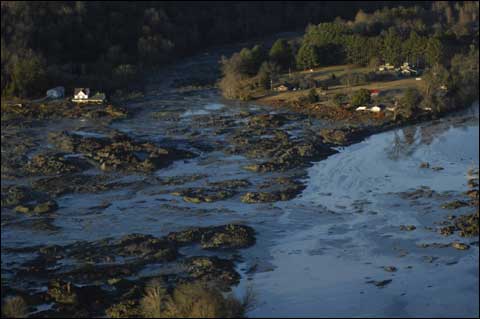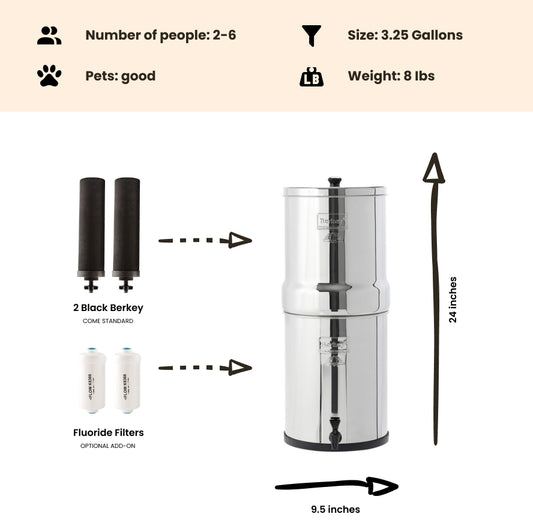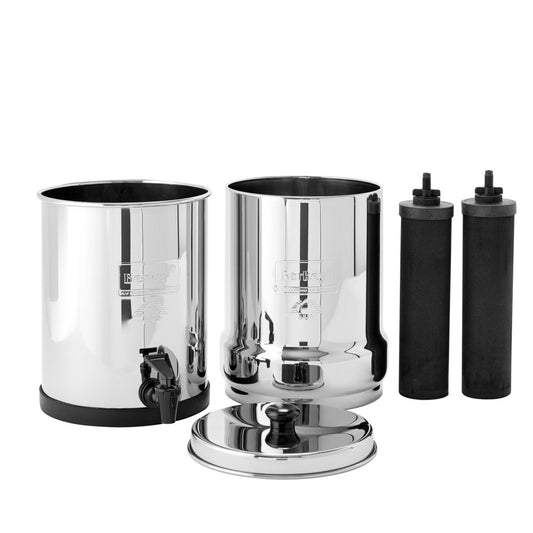
Tennessee Coal Ash Spill, An Environmental Disaster
By Dan DeBaunShare
Considered as one of, if not the biggest, environmental disasters the US has ever experienced, the Tennessee coal ash spill has alarmed many nearby residents, the EPA, and environmental groups across the nation. Many are calling it the Exxon Valdez of coal ash spills. Unfortunately, this story seems to have lost most of it's national press coverage as the new year began.
Coal Ash Spills...
It all began on Dec. 22nd, 2008 when the earthen dike of a coal ash holding pond, owned and operated by the Tennessee Valley Authority(the largest public utility in the nation), broke at the Kingston Fossil Plant. This dam failure resulted in 5.4 million cubic yards of ash being released into the neighboring community and Emory River. This national news story was televised on Dec. 26th.
Within 4 days of the spill, the drinking water is safe according to the Tennessee Valley Authority's official statement. This seems a little irresponsible given that  it was based upon a water sample taken at the Kingston Plant itself, 6 miles upstream of the actual spill. And maybe we'll just overlook the fact that a comprehensive water quality survey of a disaster of this scale requires dozens of samples before an acceptable confidence interval can be attained.
it was based upon a water sample taken at the Kingston Plant itself, 6 miles upstream of the actual spill. And maybe we'll just overlook the fact that a comprehensive water quality survey of a disaster of this scale requires dozens of samples before an acceptable confidence interval can be attained.
Here's a close up view of the damage from Dec. 27th, 5 days after the spill from a group of local environmentalists coordinated by Appalachian Voices. Credit John L. Wathen, a Hurricane Creekkeeper; Sandra Diaz, Appalachian Voices’ National Field Coordinator; and Donna Lisenby, the Watauga Riverkeeper for this footage.
Fortunately or unfortunately depending upon your perspective, on Dec. 28th, the public was able to gain some insight into the severity of the spill when the TVA disclosed to the New York Times the amount of toxins it deposited into this holding pond in 2007; in just one year. How about 2.2 million pounds of toxins including 45,000 pounds of arsenic, 49,000 pounds of lead, 1.4M pounds of barium, 91,000 pounds of chromium and 140,000 pounds of manganese. This holding pond, before it spilled out into the neighboring land and waterways, contained decades worth of deposits. Here's a fun fact - 100mg(.00022 lbs) of arsenic is considered lethal to the human body. Let me preface by mentioning that there's many variables that come into play when we discuss drinking water. Arsenic needs to dissolve fully into the water supply for a true contamination to exist, but this information is relevant because these toxins need to go somewhere. Coal ash that is not or cannot be cleaned up will seep into the ground with the potential to enter the water table where it may or may not be filtered out naturally by the sediment. Coal Ash not removed from the water will settle along the riverbed and shoreline, and continually be washed downstream where the toxins will impact the river ecosystems and aquamarine life to a yet unknown degree.On Dec 30th, the TVA and EPA issued a joint statement recommending that direct contact with coal ash be avoided and that children and pets should stay away from affected areas. With the laundry list of toxins contained in the ash, this statement was literally a week late and it'll probably leave the TVA a billion dollars short as a result of the lawsuits that began piling up last week. Erin Brockovich even decided to march into town on Jan 8th, and for those of you that saw the movie, you know the TVA couldn't of been too excited about that visit.
Coal Ash Spill Early Test Results
As you probably have guessed by now, results from some of those water tests have come in. On the whole, samples from drinking wells and from public drinking water have been found to be within safe levels, however tests of surface and river water closer to the spill showed unsafe levels of some contaminants. Preliminary tests from the Appalachian Voices samples conducted by Appalachian State University showed arsenic levels from the Kingston power plant canal testing at nearly 300 times the allowable limits in drinking water. Another sample from two miles downstream revealed arsenic at about 30 times the limit. Lead, chromium, and other heavy metals were also found to be at elevated levels from these prelim tests. On Friday, Jan. 2nd, the EPA came back with some water sample results also. Sediment and surface water samples near the spill were confirmed to contain high levels of arsenic with one sample containing more than 149 times the maximum state level. Most recently, on Tues, Jan. 6, the EPA found that two out of 16 water samples exceeded the Tennessee Water Quality Criteria for Domestic Supply.


One of the great unknowns is to what extent the drinking water for surrounding spill land areas and citizens downstream of the Emory, Clinch, and Tennessee rivers will be in the mid to long term. Since the Emory river eventually dumps into these other two rivers, any contaminants found in the Emory river has the potential to have a downstream impact. This is a serious concern as the Tennessee river is a major source of drinking water for millions of people. For their part, the TVA stated that they would be erecting a rock wall, or weir dam, to filter out fly ash from water that flows down the Emory River into the Clinch and Tennessee rivers, but as of Dec. 30th, this had not yet taken place. That's at least 8 days of downstream free flow, and I'm guessing here that those early days are the most critical in a spill such as this. Complicating the clean up efforts just this week, the region has been hit with heavy rains and flooding that has washed more of the ash into areas that were yet to be quarantined or protected.
The Cleanup and Future of East Tennessee
As of writing this article on Jan 11th, there still seems to be many unknowns as the TVA, the EPA, environmental activists, and local citizens work together and butt heads on the physical clean-up, short to long term safety monitoring, and general environmental remediation. Seeing and reading about local environmental groups and citizens coming together to work through this disaster has given many, including myself, a sense of hope. But, this is the beginning of a long journey. Municipal water filtration systems should be able to address spill toxins that may contaminate city water sources. However, well water drinkers will need to be a little more weary and pay close attention to well test sampling results as seepage contamination takes more time to become evident. The EPA is recommending that residents on well water either not drink their water at all until more tests are conducted or filter their water. As for the aquamarine, plant, and animal life, their options are limited and it's evident that they're paying the biggest price of us all.
In a unfortunate coincidence, Jan. 9th revealed another gypsum slurry spill in NE Alabama at the Widows Creek coal fire plant owned by none other than the TVA. This one was much smaller at only 10,000 gallons compared to the 1 Billion gallons in TN. I'm starting to think that we may have a bigger regulatory problem on our hands here. There are 156 Coal Fire Plants in the US, and they are all virtually unregulated when it comes to coal ash waste disposal. Senator Barbara Boxer, a California Democrat and chair of the Senate Environment and Public Works Committee said it best to the CEO of TVA, Tom Kilgore, at the recent Jan. 8th congressional committee hearing, "You need to have a plan to clean this spill up and you don't have it yet. People will never feel safe there again."
-
Regular price $234.00 USDRegular priceUnit price / per
-
Regular price $327.00 USDRegular priceUnit price / per
-
Regular price From $367.00 USDRegular priceUnit price / per
-
Regular price From $408.00 USDRegular priceUnit price / per
-
Regular price From $451.00 USDRegular priceUnit price / per
-
Regular price From $478.00 USDRegular priceUnit price / per
-
Regular price $332.50 USDRegular priceUnit price / per
$350.00 USDSale price $332.50 USDSale

Dan DeBaun
Dan DeBaun is the owner and operator of Big Berkey Water Filters. Prior to Berkey, Dan was an asset manager for a major telecommunications company. He graduated from Rutgers with an undergraduate degree in industrial engineering, followed by an MBA in finance from Rutgers as well. Dan enjoys biohacking, exercising, meditation, beach life, and spending time with family and friends.
~ The Owner of Big Berkey Water Filters
















Hello !! ^_^
My name is Piter Kokoniz. Just want to tell, that I like your blog very much!
And want to ask you: will you continue to post in this blog in future?
Sorry for my bad english:)
Thank you:)
Piter.